Whether you prefer to admire them from afar or hit the trails for a hike, mountains are one of the world’s greatest wonders! But sometimes they can be so huge that the mere thought of climbing all the way to the summit is dizzying–even for the most seasoned hikers.
So, just how tall can the largest mountains in the world get? Today we’ll be taking a look at 10 of the largest mountains in the world and ranking them according to how tall they are. We’ll also learn some interesting facts about the wildlife that thrives near each one, as well as what each mountain is known for!
-
Annapurna
Range: Himalayas
Location: Nepal
Local Wildlife Species: Goral
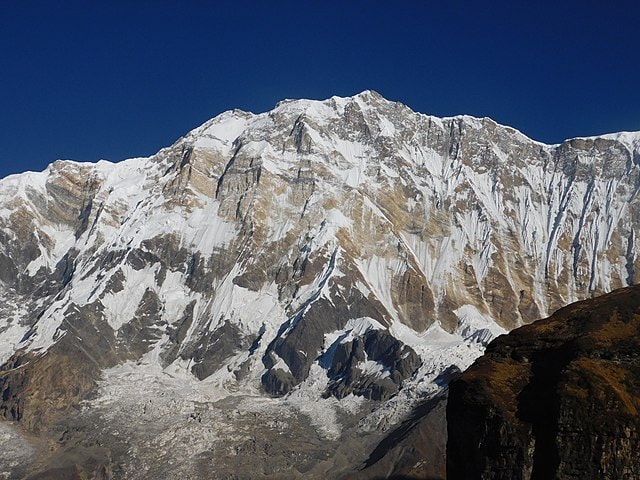 Source: wikimedia.org
Source: wikimedia.org
This glorious mountain is technically named Annapurna I and its counterpart, Annapurna II, is also notable as the 16th-highest mountain in the world! Frenchmen Maurice Herzog and Louis Lachenal first ascended this mountain in 1950, discovering firsthand how difficult and treacherous the climb was. In fact, this mountain is said to be the most dangerous eight-thousander to climb.
Did you know?
The goat-like Goral of the Annapurna area used to be hunted for food, which contributed to the reduction of its population.
-
Nanga Parbat
Range: Himalayas
Location: Pakistan
Local Wildlife Species: Himalayan Marmot
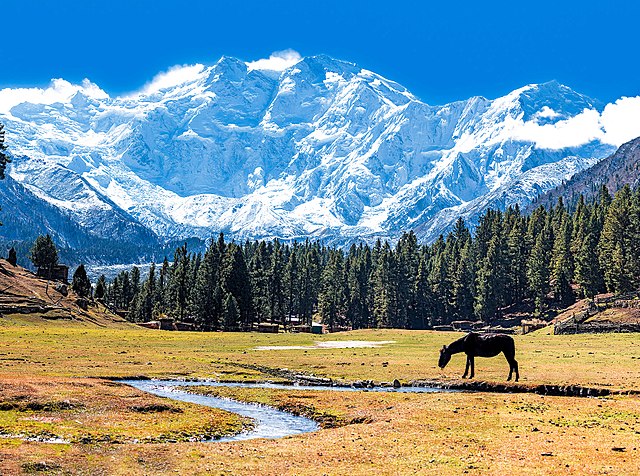 Source: wikimedia.org
Source: wikimedia.org
This mountain’s beautiful yet forbidding slopes earned it the nickname “Killer Mountain” in the wake of a high hiker fatality rate in the mid-20th century. It is also the westernmost of the eight-thousanders and has three distinct faces: Rakhiot, Diamir face, and Rupal. This mountain is also known as Diamir, and is is closely bordered by the Indus River on its north side.
Did you know?
The Himalayan Marmot is widespread throughout the land area on and surrounding Nanga Parbat.
-
Manaslu
Range: Himalayas
Location: Nepal
Local Wildlife Species: Asian black bear
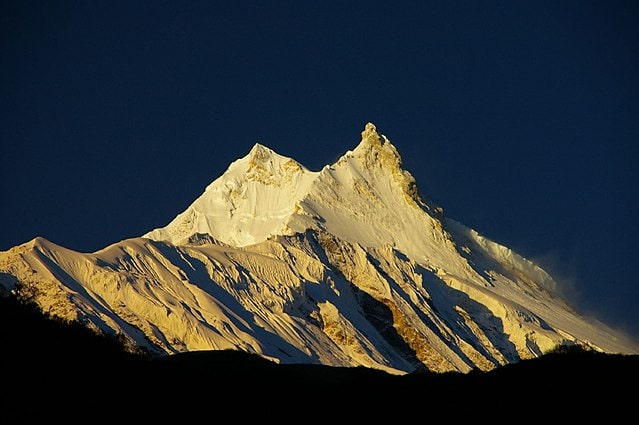 Source: wikimedia.org
Source: wikimedia.org
Also known as Kutang, this mountain is located in the Mansiri Himal subrange of the Himalayas and is the highest mountain peak in the Gorkha District of Nepal. The main 177-kilometer trekking route that curves around Manaslu on the way to Annapurna was formerly used as a salt trading route near the Burhi Gandak River. Several different rare and endangered species of wildlife reside on and around this mountain, including red pandas and snow leopards.
Did you know?
The Asian black bear normally keeps to itself, and its search for vital foods and nutrients is believed to be its main source of conflict with humans.
-
Dhaulagiri
Range: Himalayas
Location: Nepal
Local Wildlife Species: Himalayan tahr
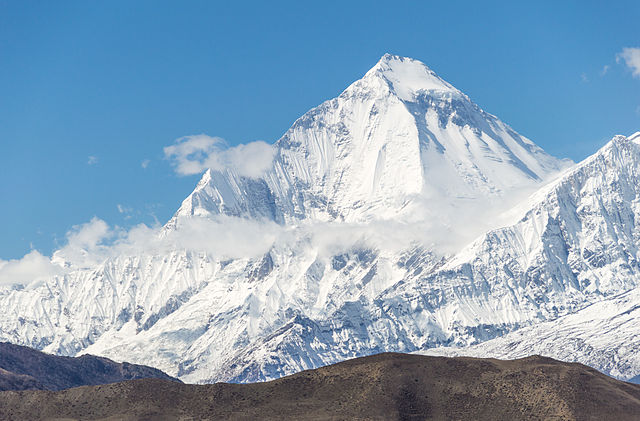 Source: wikimedia.org
Source: wikimedia.org
Dhaulagiri falls entirely within the borders of Nepal, making it the tallest mountain in the world to be contained within a single territory! The slopes of this impressive mountain were first climbed in 1960 by an expedition that included members from Switzerland and Austria as well as from Nepal. Most ascents that people make today start out at the northeast ridge of the mountain.
Did you know?
The Himalayan tahr, a local ungulate, is extremely agile and has no problem navigating the rugged terrain in order to escape from potential threats.
-
Cho Oyu
Range: Himalayas
Location: Nepal/China
Local Wildlife Species: Tibetan wolf
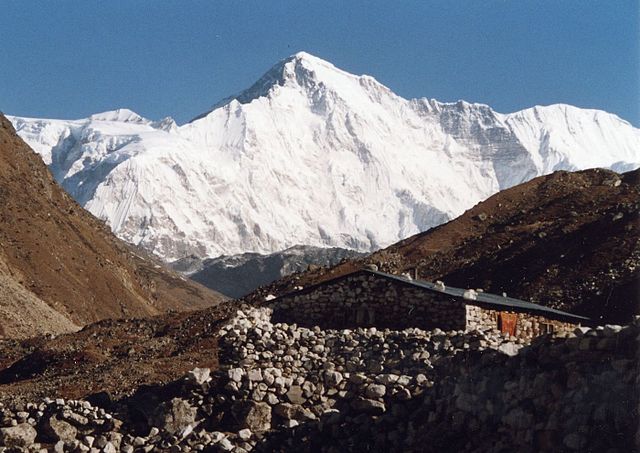 Source: wikimedia.org
Source: wikimedia.org
Cho Oyu, whose name means “Turquoise Goddess” in Tibetan, rests right on the border between China and Nepal. It is said to be the easiest eight-thousander to climb and welcomes many professionally-guided hiking parties. In 2019, 16-year-old Jane Kanizay became the youngest woman in the world to climb to the peak of Cho Oyu, and undoubtedly took some great stories and photos home to Australia!
Did you know?
The powerful Tibetan wolf can reach speeds of up to 40 mph while running, especially during adrenaline-fueled hunts.
-
Makalu
Range: Himalayas
Location: Nepal/China
Local Wildlife Species: Asian golden cat
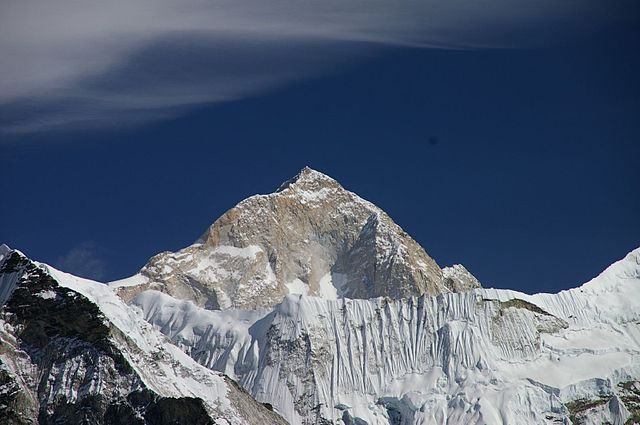 Source: wikimedia.org
Source: wikimedia.org
Makalu is notable not only for its immense size, but for its distinctive and naturally-occuring four-sided pyramid shape as well. The name Makalu is actually derived from Maha Kala, the Sanskrit words for “Big Black,” which describe the Hindu god Shiva. Barun Valley, which rests below Makalu, is carefully maintained as a Strict Nature Reserve in order to protect the unique and rare species of animals that live there.
Did you know?
The rare Asian golden cat that lives in the Himalayas around Makalu can create a vast range of vocalizations, usually keeps to itself, and is highly territorial.
-
Lhotse
Range: Himalayas
Location: Nepal/China
Local Wildlife Species: Wild yak
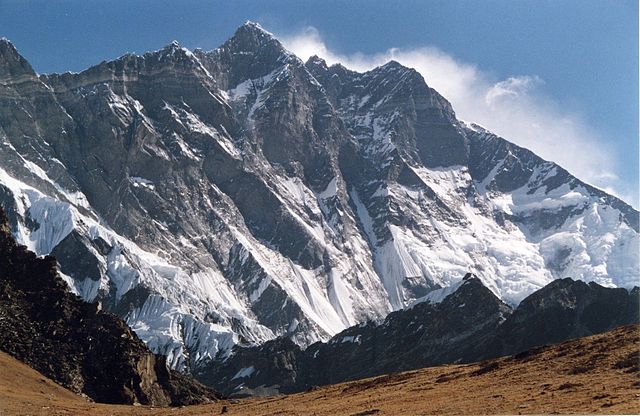 Source: wikimedia.org
Source: wikimedia.org
Lhotse sits on the border between Nepal and Tibet Autonomous Region of China and actually has three different summits. Alongside the main peak of Lhotse, the other two peaks are Middle Lhotse and Lhotse Shar. Fritz Luchsinger and Ernest Reiss came from Switzerland to tackle the first recorded ascent of these slopes in 1956.
Did you know?
The Wild yaks around Lhotse are the ancestors of the domesticated yaks that often provide invaluable resources to the people of Tibet and Nepal.
-
Kangchenjunga
Range: Great Himalayas
Location: Nepal/India
Local Wildlife Species: Himalayan blue sheep
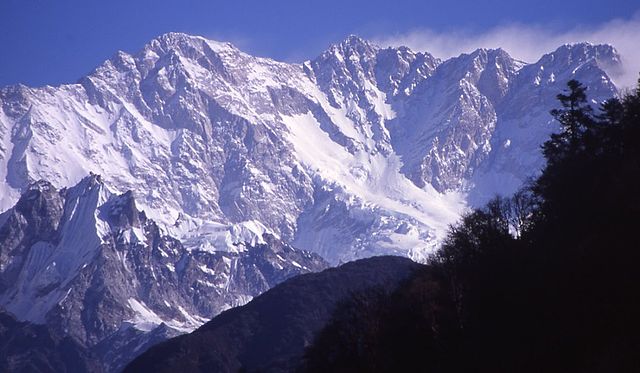 Source: wikimedia.org
Source: wikimedia.org
Kangchenjunga, sometimes spelled Kanchenjunga, towers above most of its neighboring mountains in the section of the Himalayas nestled between the Tamur and Teetsa Rivers. This mountain is the highest one in India, and the second highest mountain in Nepal! The name of the mountain was put together from several Tibetan words and is usually interpreted as “Five Treasuries of the Great Snow.”
Did you know?
The Himalayan blue sheep, or bharal, isn’t actually a sheep at all but is more closely related to goats!
-
K2
Range: Karakoram
Location: Pakistan/China
Local Wildlife Species: Siberian ibex
 Source: wikimedia.org
Source: wikimedia.org
Often called the “Savage Mountain” as a result of its high fatality rate among hikers, this gorgeous mountain towers right at 777 feet beneath Mount Everest. British surveyor T.G. Montgomerie gave this mountain its unusually short name in 1852 because it was the second peak listed in the Karakoram Range. The mountain sits on the border of Pakistan and China and, since it is based on higher ground than Mount Everest, is actually the most prominent mountain in the world!
Did you know?
The Siberian ibex must consume anywhere between 18 and 35 pounds of food daily to survive.
-
Mount Everest
Range: Himalayas
Location: Nepal/China
Local Wildlife Species: Bar-headed goose
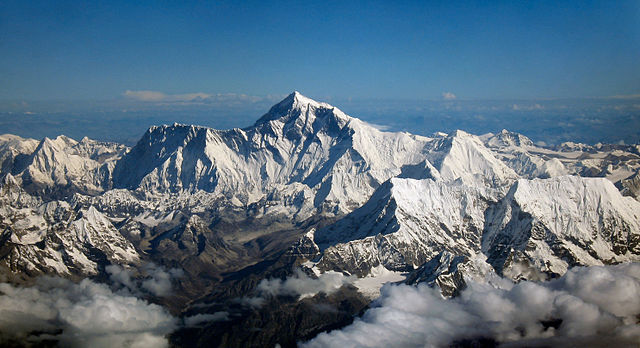 Source: wikimedia.org
Source: wikimedia.org
Mount Everest is the largest mountain in the world by height. It is also, arguably, one of the most famous! The mountain’s claim to fame comes not only from its status as the greatest in the world, but from its high fatality rate for climbers as well: An estimated 120 fallen hikers still remain where they succumbed to the elements. Remarkably, Mount Everest manages to grow taller each year at an annual rate of around four millimeters as a result of geological uplift.
Did you know?
The Bar-headed goose that lives in the area builds ground nests within which it lays three to eight eggs per clutch.
